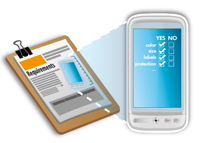 Two weeks ago I met with Thomas Schmidt, who works as a sales executive at Eurofins Product Testing. Their Shanghai facility is a mid-size testing laboratory that can test most electrical products, as well as many hardline and textile goods.
Two weeks ago I met with Thomas Schmidt, who works as a sales executive at Eurofins Product Testing. Their Shanghai facility is a mid-size testing laboratory that can test most electrical products, as well as many hardline and textile goods.
I took this opportunity to ask him a few questions:
Q: Can you explain how a manufacturer can work with a laboratory to have his product certified?
A: This is one of the most straightforward processes a manufacturer can experience.
It must apply to the laboratory for testing and must include the product information (label, manual, CDF), and physical product sample. When this is submitted, the laboratory proceeds to test and then issue a report.
A fail necessitates action on the part of the manufacturer to make its product meet compliance. On the other side, a pass on the report leads to subsequent issuance of the certification.
Q: Can you explain how an importer can work with a laboratory to have a batch of products tested?
A: For the importer, the process is quite similar.
It can apply for testing as an “applicant”, “certificate holder”, “manufacturer”, or a combination of the three depending on its circumstances. After this, the process is the same, and necessitates the same materials.
Q: For electrical products, what is a CDF and why is it an important document?
A: CDF stands for “Construction Data Form”; this document details the state of compliance for the internal components of a particular electrical product.
This is important because it provides confirmation to the product testing laboratory about the safety of each internal component and allows it to focus on testing of the overall product itself without undue complications.
It is also a necessary part of an IEC testing form.
Q: What is an IEC testing form?
A: IEC stands for International Electrotechnical Commission, which operates CB Scheme. It provides a framework for electrical equipment testing which allows them to more easily comply with the standards of different countries within the worldwide market.
It is applicable only to electrical products.
Q: So, during a final QC check, the inspector should ask to see the CDF, right?
A: Actually, in the final QC check involving the CDF the inspector must verify that the components are identical to those mentioned in the CDF.
This is of course no easy task. The inspector must check the information contained in the CDF (for example component model number, and specifications) against the component itself.
If he is uncertain about whether they are identical or not, the inspector can request to view the relevant certificates for the parts in question. If the information is not satisfactory, the CDF issues must be rectified, and the item must be returned to the third-party laboratory for retesting.
To avoid this confusion, the importer must make sure that all relevant information is visible on the components, and that all documents are available to the inspector.
—
This is great advice. I really want to thank Thomas and Eurofins.
Maybe some readers have additional questions?
Disclaimer
We are not lawyers. What we wrote above is based only on our understanding of the regulatory requirements. QualityInspection.org does not present this information as a basis for you to make decisions, and we do not accept any liability if you do so.
